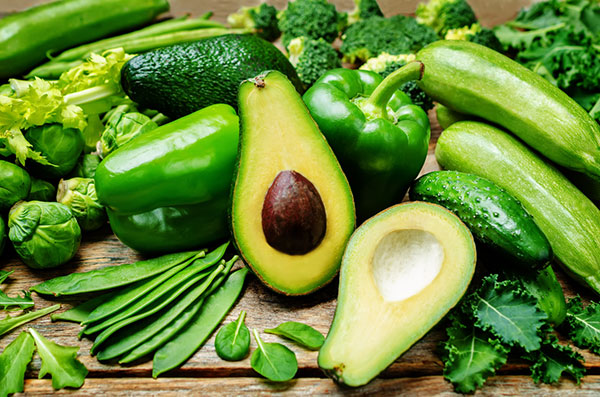 What if there was something that could help you control your hunger? What if it also helped regulate blood sugar? And helped you feel fuller for longer and contributed to weight loss? What if it also made you more regular? And helped lower cholesterol levels? Would it seem like a magic pill? Would it be something you would want more of? Well, then fill up on fiber.
What if there was something that could help you control your hunger? What if it also helped regulate blood sugar? And helped you feel fuller for longer and contributed to weight loss? What if it also made you more regular? And helped lower cholesterol levels? Would it seem like a magic pill? Would it be something you would want more of? Well, then fill up on fiber.
Fiber is the indigestible carbohydrate that is found in fruits, vegetables, breads, nuts, beans, and other plant based foods. Fiber is not found in fish and meats, so if you are focusing on eating more protein, you may be missing out on fiber. This is important for gastric sleeve, gastric bypass, and lap band patients to be aware of since a lot of focus is put on consuming upwards of 80g of protein per day.
For bariatric patients, it can be confusing. Weight loss surgery patients are often told to eat less carbohydrates. But, isn’t fiber a carbohydrate? Yes, it is, but not in the same way a bagel is a carbohydrate. As you can’t break fiber down, you won’t actually be absorbing the calories it contains. This is how it can help promote bowel regularity and also help remove cholesterol from the bloodstream. Soluble fiber can be fermented into gases and other byproducts, which can delay gastric emptying, causing you to feel full. As digestion is slowed by fiber, your meal is not broken down as quickly, and the sugars from the digestive process do not all hit your bloodstream at one time, which helps control blood sugar.
Now that you know how the magic works, use these four ways to fill up on fiber:
-
Add vegetables to your eggs.
Spinach, broccoli, kale, peppers, onions, mushrooms, avocado, or whatever suits your fancy. Adding vegetables to your breakfast starts you out on the right track for meeting the Academy of Nutrition and Dietetics’ guideline for consuming 20-35 g/day for adults.
-
Incorporate more beans and legumes to your diet.
Black beans, garbanzo beans, kidney beans, edamame, and lentils can be good choices and are easy to find ways to add them. Black bean tacos, chili with kidney beans, garbanzo beans in a salad, steamed edamame, and lentil vegetable soup are all foods that can be both delicious and easy to fit into a post bariatric surgery diet.
-
Make nuts a snack
Peanuts, cashews, almonds, walnuts, and even seeds like sunflower and pumpkin can make great snacks. They offer a crunch and a saltiness that can help replace the desire for chips. They have protein as well as fiber, which makes them a good choice for gastric sleeve, gastric bypass, and lap band patients. Just watch your portion size as their heart healthy fats add calories that can add up quickly.
-
Choose whole grains
When you are able to, opt for whole grains. This includes cereal, pasta, bread, rice, and other grains like quinoa. Whole grains have more fiber in them than their more processed counterparts like white rice or white bread. This helps contribute to your fiber intake and also cut down on your effective carbohydrate intake. But don’t add grains into your diet just to meet your fiber quotient for the day. Save that for our next tip.
-
Learn to love your veggies (and fruits)
Vegetables are just such a great source of fiber that they need mentioning twice. Not only can you meet you fiber allotment through vegetables, they generally low in calories, and have a host of vitamins, minerals, and phytonutrients that are hard to get elsewhere. Fruits also are a great source of fiber, but they can be higher in calories and sugar so don’t go overboard on them like you can with vegetables. Try eating two vegetables with dinner, eating your protein over a salad, or having vegetables and hummus as a snack. Vegetables can be delicious if you give them a try.
The above suggestions are offered by Dr. Shillingford, M.D., P.A., a board certified surgeon specializing in laparoscopic, robotic, and weight loss surgery. Dr. Shillingford performs gastric sleeve, gastric bypass, and gastric band surgery at one of South Florida’s few hospitals designated as a Center of Excellence for Bariatric Surgery by the American Society for Bariatric Surgery. Some of his patients come from local areas, such as Miami and Fort Lauderdale, but his reputation and surgical skills also attract patients from as far away as Orlando, Jacksonville, Sarasota, Tampa, Fort Meyers, and Naples. His weight loss surgery patients are often looking for ways to optimize their weight loss efforts, and adding fiber can help in a variety of ways.

 Am I A Candidate
Am I A Candidate  BMI Calculator
BMI Calculator  Why Choose Us
Why Choose Us